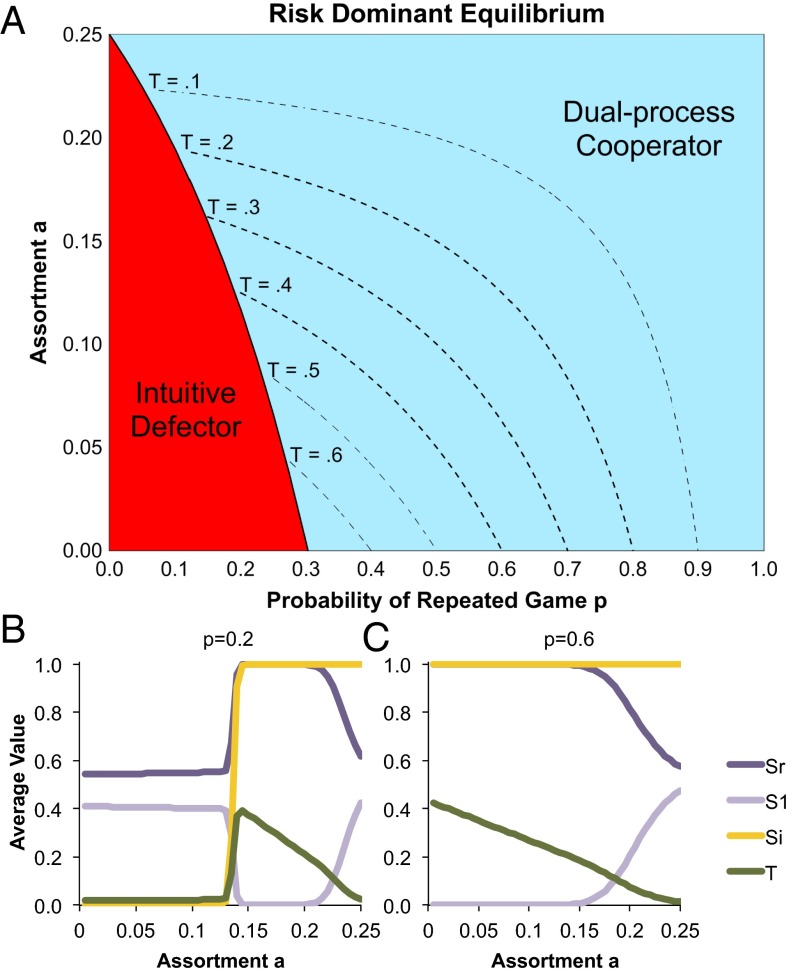Fig. 3.
Assortment also favors the evolution of dual process cooperators. (A) Nash equilibrium calculations with assortment (a > 0) again find that ID and DC are the only possible equilibria. The risk-dominant strategy is shown as a function of the probability of repeated games p and the level of assortment a (risk-dominance indicates which strategy will be favored by selection; see SI Appendix, Fig. S1 for corresponding evolutionary calculations). DC is favored so long as either p or a are sufficiently large. Thus, regardless of whether evolution occurs in a world where reciprocity is powerful and assortment is weak, or where reciprocity is weak and assortment is strong, selection favors intuitive cooperation combined with deliberative defection in one-shot games. Also shown are isoclines for T within the region where DC is favored. Here, increasing either a or p decreases T. Thus, we find an interaction with reciprocity when considering how assortment affects cognitive style: when p is low, assortment initially increases deliberation, but when p is high, assortment monotonically decreases deliberation. This interaction is visualized by showing the average values of each strategy variable in the steady-state distribution of the evolutionary process as a function of assortment a, for p = 0.2 (B) and p = 0.6 (C). Evolutionary calculations use N = 50, b = 4, c = 1, d = 1, and w = 6.

